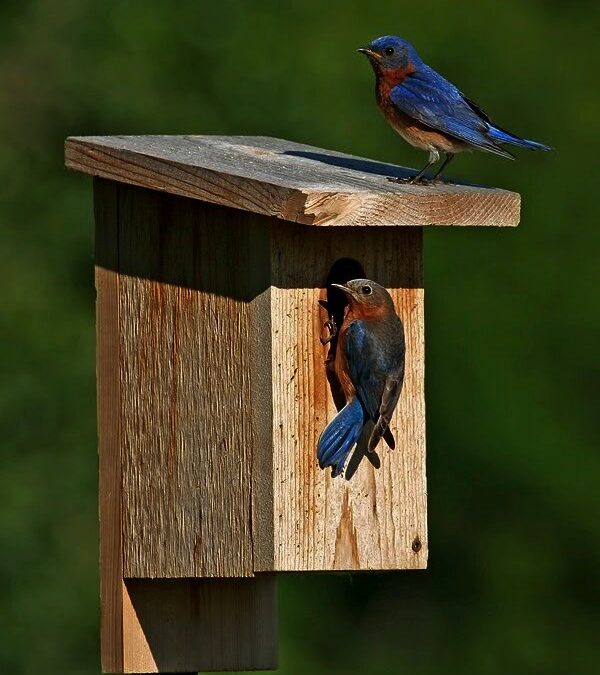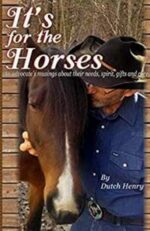Howdy Friends! February, is the perfect time to start a Bluebird Trail! Bluebirds love to be loved. And they will repay you with countless hours of beauty and fun. They are what is called cavity nesters, that is to say they select nest sites in cavities of trees, fence posts and other locations that offer shelter. They do not create the cavities, rather they just find and occupy holes made by nature or woodpeckers or other creatures.
They readily accept man-made nest boxes. Since the mid 1960’s Bluebird trails have really helped bring the beautiful little bird from dangerously low numbers. Their numbers decline was largely blamed on loss of habitat and nesting locations.
For some 20 years I volunteered with the PA Department of Environmental Protection to monitor a Bluebird Trail at French Creek State Park, and conduct bird walks and talks, and I thought it would be fun to share some of what I learned there.
I was introduced to the project by a wonderful environmentalist, Pat Magnus and we enjoyed many years of birding and studying nature together. Pat went to Heaven a few years back, but all she put in motion will live on forever. Including great Bluebird trails!
I used to check my Bluebird trail on horseback in French Creek all 50 boxes over 3 hours of riding. At one time for a few years I had 3 different trails going in different locations!
You can start a Bluebird trail with one nest box, or many boxes and maintaining is easy and fun to do. Nest boxes are readily available to purchase or you can find plans to build your own on the internet here NORTH AMERICAN BLUEBIRD SOCIETY then click on “Fact Sheets” scroll down to “Nest Box Plans”. The simplest are the best. I recommend the “Carl Little Bluebird box” you’ll find there. Although I put an entrance hole in both the front and one side. Better for ventilation and escape in case of predator. There is wealth of information on this site, too.
First, you need a good location to start a bluebird trail. It really is true, “if you build it they will come.” But you must have the correct location. As with most of the guidelines for successful Bluebird trails, or just a single box in your yard, the basics are indeed basic and to complicate them with nifty strategies will set you up for heartbreak and disappointment. So please keep it simple. Most important is “LOCATION.”
- They like their nest box in the open, preferably 100 feet from the woods edge or trees. Closer to the trees Bluebirds might well accept and build, but Wrens are big predators and might kill your Bluebirds to steal the nest.
- Do not mount your boxes near buildings, barns etc. whre house sparrows are seen. They are huge Bluebird predators and will kill the mammas and babies right on the nest. House Sparrows and Bluebirds do not mix and the Bluebirds will always loose. There are all kinds of guards, gimmicks and tricks, but ultimately they end up not working. It’s best for the Bluebirds to just find a place away from House Sparrows.
- Mount your box on a smooth metal pipe or post. If snakes are a problem slip a PVC pipe around the post before driving it in. This will also detour raccoons etc. Bluebirds are territorial to each other and want their boxes at least 300 feet apart.
- Tree Swallows and Bluebirds DO get along nicely, and will use the same type box. In fact we found putting 2 boxes about 5 feet apart worked fabulously. Bluebird in one, Tree Swallow in the other and since Tree Swallows are great home defenders the Bluebirds benefit from a home security guard!
- Monitor your boxes weekly. It’s fun to keep records and important that you know what’s going on. It takes about a week, or if they are in a hurry a few days to build a nest. 4 or 5 days to lay the eggs. Then 14+ days to hatch. 17 to 20 days to fledge. The parents will feed the fledglings for about 7 to 12 days.
- Clean the box after each fledging so it is ready to go again. Depending where you live you will get 2 to 4 nestlings … If you had predation consider what it was, must you move the box or just clean it and let them try again. If you had babies or eggs and everything disappears with no damage to the nest it was a snake. Be sure to install a PVC pipe around your mounting pole to prevent it.
- Nests – Bluebirds do neat little circle nests of dry grass or pine needles. Tree Swallows not so neat and add a few feathers. House Sparrows messy and lots of feathers and even paper trash. Wrens do tall nests of small twigs and will stuff several boxes full just to command the area.
- Predator guards – Great idea, use them. Also NO perches on the outside as this allows predator birds to sit there.
- In recent years I’ve begun to put holes in both the front and one side. Aids in ventilation and allows for an escape if a predator has one hole blocked. I also “score” the inside of the panels the holes are in, this aids the fledglings exit as it gives them toe holds.
- Have fun, keep notes and take plenty of pictures. You will learn a lot about wildlife and nature on a Bluebird trail. Cornell University and the North American Bluebird Society have programs you can join to send in your records. It’s great fun!
Well those are the biggest tips to start a bluebird trail or 1 box or many. There is a lot more information you can gather at the website above. But again, proper site location is the single biggest, most important thing to consider.
May you have many Bluebird days! ~ Dutch Henry.









